
 Erosion in dams is a silent but potent threat that can compromise the structural integrity of these vital pieces of infrastructure. Over time, water leaks through cracks and joints in the concrete can lead to the gradual wearing away of material. This phenomenon is not just a maintenance issue; it poses a significant risk to the dam's overall stability and safety.
Erosion in dams is a silent but potent threat that can compromise the structural integrity of these vital pieces of infrastructure. Over time, water leaks through cracks and joints in the concrete can lead to the gradual wearing away of material. This phenomenon is not just a maintenance issue; it poses a significant risk to the dam's overall stability and safety.
How Erosion Undermines Structural Integrity
Erosion can have a cascading effect on a dam's structural integrity. As water seeps through cracks, it erodes the concrete and the soil behind it, enlarging the openings over time. This process can weaken the dam structure, making it susceptible to more severe forms of damage, such as cracking or even failure. Moreover, erosion can lead to other complications. For instance, it can result in sediment build-up, which may require costly dredging operations. It can also increase hydrostatic pressure behind the concrete walls, leading to further cracking and potential structural failure. Therefore, addressing erosion is not just about maintaining the dam but ensuring its long-term viability and safety.
The Role of Polyurethane Grout in Erosion Control
Polyurethane grout offers a robust solution to the problem of erosion in dams. This material not only seals the openings but also adheres strongly to the concrete, providing a long-lasting solution. One of the key advantages of polyurethane grout is its flexibility. Unlike cementitious grouts, which can be rigid and may crack under pressure, polyurethane grout maintains its elasticity. This property allows it to accommodate the natural movements of the dam structure, such as thermal expansion and contraction, without losing its sealing capabilities. Another benefit is the speed of application. Polyurethane grout cures quickly, often within minutes, allowing for rapid sealing of leaks. This quick cure time minimizes operational downtime, a critical factor for dams used in hydroelectric power generation or water supply. The material's versatility is another strong point. Polyurethane grout can be used in a variety of dam types, including concrete, earthen, and masonry dams. Its application is not limited by the size or shape of the crack, making it a go-to solution for a wide range of erosion-related issues.
Actionable Steps for Dam Owners and Operators
For dam owners and operators looking to address erosion, several actionable steps can guide the process.
- Conduct a Comprehensive Inspection: Before initiating any repair work, it's crucial to conduct a thorough inspection. This will help identify the areas most affected by erosion and the severity of the leaks.
- Consult with Engineers and Experts: Seek advice from engineers and expert contractors who specialize in dam maintenance and repair. Their expertise can guide you in selecting the most effective repair methods and materials, ensuring long-term durability and reliability.
- Choose High-Quality Material: While there are various materials available for sealing leaks, polyurethane grout is often recommended for its effectiveness and durability. Ensure that you select a high-quality product from a reputable manufacturer.
- Hire a Skilled Contractor: The success of the repair work largely depends on the contractor's expertise. Choose contractors with a proven track record in using polyurethane grout for dam repairs.
- Regular Monitoring and Scheduled Inspections: After the repair work is complete, it's essential to conduct regular monitoring and scheduled inspections. This helps in early detection of any new areas of concern, ensuring the effectiveness of the seal over time.
The Economic Benefits of Sealing Leaks with Polyurethane Grout
Addressing erosion with polyurethane grout is not just a matter of structural integrity; it's also an economically sound decision. The material's durability means fewer repairs are needed over the long term, reducing maintenance costs. Its quick cure time minimizes operational downtime, which is particularly beneficial for hydroelectric dams where every minute counts in terms of energy production. Moreover, the material is cost-effective. When considering the lifecycle costs, including maintenance and potential downtime, polyurethane grout often proves to be the most economical choice for combating erosion in dams.
Ensuring Long-Term Dam Safety
Erosion is a pervasive issue that can significantly compromise a dam's structural integrity if not addressed promptly and effectively. Polyurethane grout offers a robust, durable, and economically viable solution to this problem. By understanding the material's properties and benefits, and by taking actionable steps to hire a qualified waterproofing contractor, dam owners and operators can significantly enhance the longevity, safety, and efficiency of their infrastructure. This proactive approach to erosion control is not just about fixing a current problem; it's about safeguarding the future of the dam and the communities it serves.




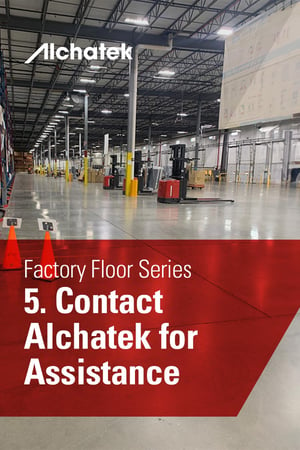 Technical Support
Technical Support

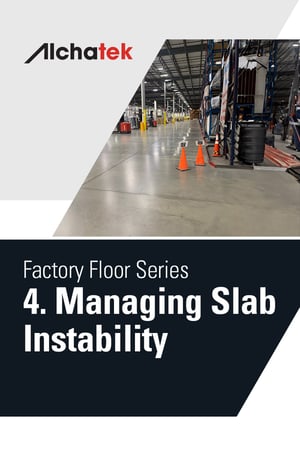 Plant and factory managers must select qualified contractors in order to effectively address the challenges associated with slab instability. Choosing contractors with expertise in slab stabilization and polyurethane application will enable managers to tackle these issues successfully.
Plant and factory managers must select qualified contractors in order to effectively address the challenges associated with slab instability. Choosing contractors with expertise in slab stabilization and polyurethane application will enable managers to tackle these issues successfully.
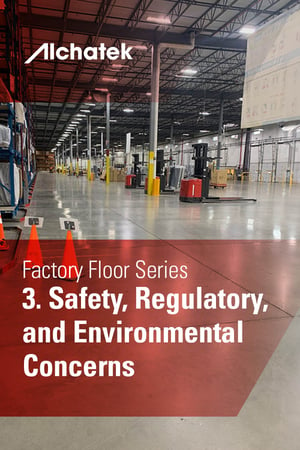 The preceding articles in this series have dissected the operational and financial implications of slab instability in manufacturing plants and factories. This third installment will pivot to another set of equally critical concerns: safety, regulatory compliance, and environmental impact. These aspects often intertwine with operational and financial considerations, making them indispensable in any comprehensive discussion about slab instability.
The preceding articles in this series have dissected the operational and financial implications of slab instability in manufacturing plants and factories. This third installment will pivot to another set of equally critical concerns: safety, regulatory compliance, and environmental impact. These aspects often intertwine with operational and financial considerations, making them indispensable in any comprehensive discussion about slab instability.
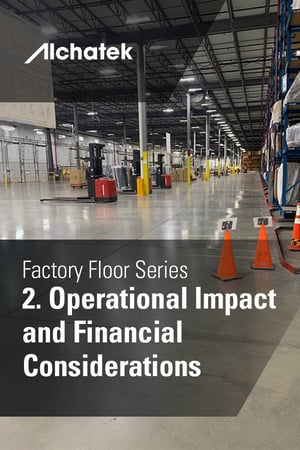 The previous article in this series introduced the top 10 concerns that plant and factory managers face when dealing with unstable or sunken slabs. This installment will focus on the operational and financial implications of slab instability, two aspects that are often at the forefront of managerial concerns. Understanding these implications is crucial for making informed decisions on how to address the issue effectively.
The previous article in this series introduced the top 10 concerns that plant and factory managers face when dealing with unstable or sunken slabs. This installment will focus on the operational and financial implications of slab instability, two aspects that are often at the forefront of managerial concerns. Understanding these implications is crucial for making informed decisions on how to address the issue effectively.
 In the world of manufacturing and industrial operations, the integrity of facility floors often takes a backseat to more immediate concerns like machinery efficiency, workforce productivity, and quality control. However, the stability of concrete slabs in manufacturing plants and factories serves as the foundation upon which these critical operations rest. This article aims to shed light on the importance of maintaining stable slabs and to introduce the top 10 concerns that plant and factory managers face when dealing with unstable or sunken slabs.
In the world of manufacturing and industrial operations, the integrity of facility floors often takes a backseat to more immediate concerns like machinery efficiency, workforce productivity, and quality control. However, the stability of concrete slabs in manufacturing plants and factories serves as the foundation upon which these critical operations rest. This article aims to shed light on the importance of maintaining stable slabs and to introduce the top 10 concerns that plant and factory managers face when dealing with unstable or sunken slabs.
 The Significance of Forward-Thinking Maintenance
The Significance of Forward-Thinking Maintenance
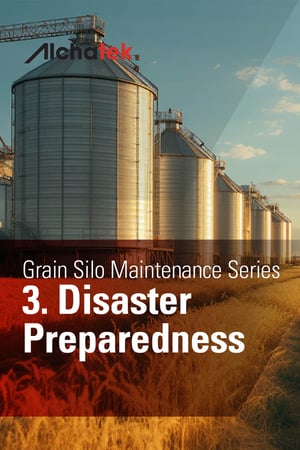 Preparing for the Unpredictable: The Role of Maintenance in Disaster Readiness
Preparing for the Unpredictable: The Role of Maintenance in Disaster Readiness
 In the world of grain storage, the focus often falls on the towering structures that dominate the landscape. However, what lies beneath these silos—the concrete slabs—plays an equally critical role in ensuring the safety and efficiency of grain storage operations. Sunken slabs can compromise the structural integrity of the entire silo, posing safety risks and operational challenges. Here, the importance of maintaining stable and level slabs, the role they play in structural integrity, and the use of polyurethane for slab leveling are explored.
In the world of grain storage, the focus often falls on the towering structures that dominate the landscape. However, what lies beneath these silos—the concrete slabs—plays an equally critical role in ensuring the safety and efficiency of grain storage operations. Sunken slabs can compromise the structural integrity of the entire silo, posing safety risks and operational challenges. Here, the importance of maintaining stable and level slabs, the role they play in structural integrity, and the use of polyurethane for slab leveling are explored.

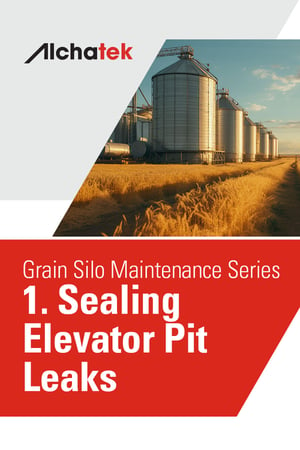 Grain silos serve as the backbone of agricultural storage and supply chains. They hold not just grain but also the trust of farmers, suppliers, and consumers. One of the most critical yet often overlooked aspects of maintaining a grain silo is the integrity of its elevator pits. Leaks in these pits can lead to a cascade of problems, from grain contamination to equipment malfunction. Understanding the importance of sealing leaks in elevator pits, the risks of water ingress, and the role of polyurethane provides actionable knowledge for effective grain silo management.
Grain silos serve as the backbone of agricultural storage and supply chains. They hold not just grain but also the trust of farmers, suppliers, and consumers. One of the most critical yet often overlooked aspects of maintaining a grain silo is the integrity of its elevator pits. Leaks in these pits can lead to a cascade of problems, from grain contamination to equipment malfunction. Understanding the importance of sealing leaks in elevator pits, the risks of water ingress, and the role of polyurethane provides actionable knowledge for effective grain silo management. 